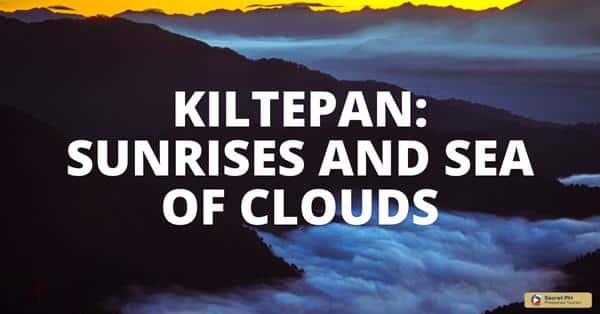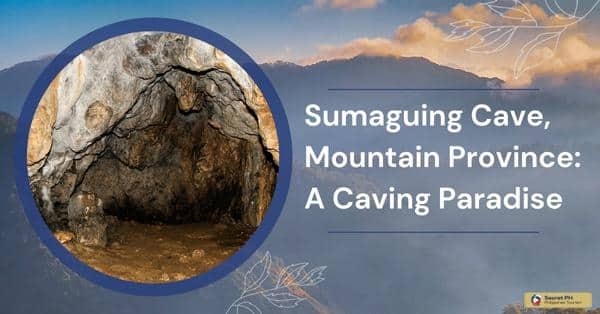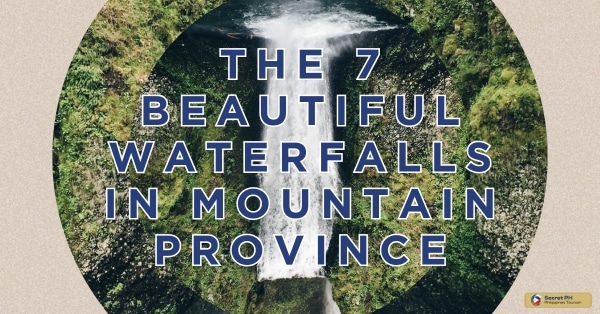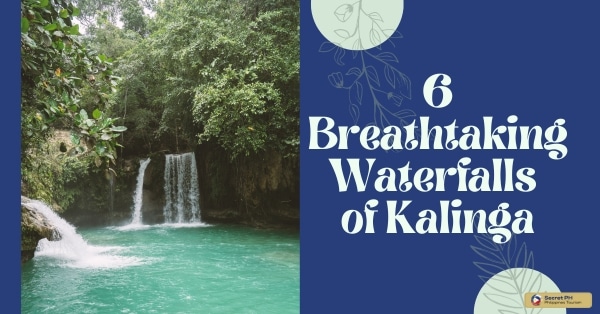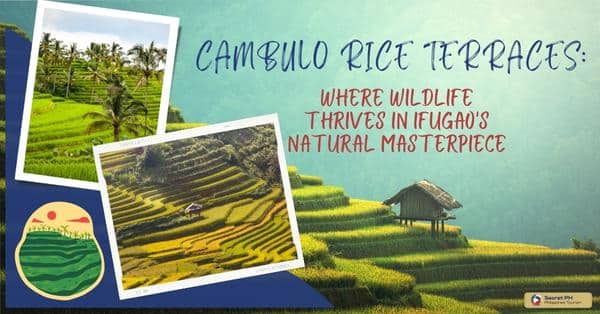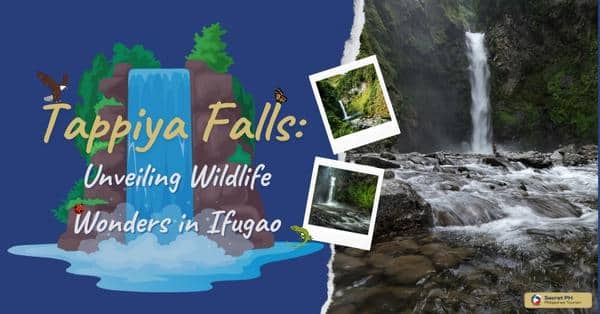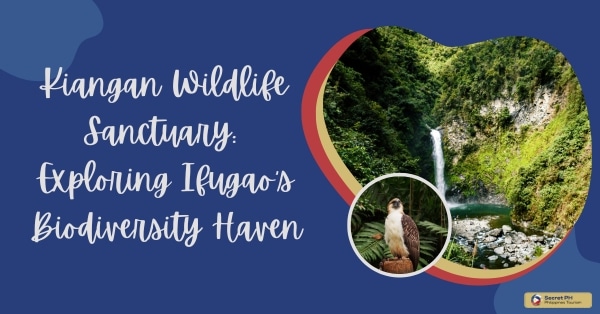Explore the beauty and diversity of Philippine nature and wildlife with our top 10 ways to experience the best of the Philippines. Dive in Palawan’s crystal-clear waters, trek in the Cordillera Mountains, visit the Apo Reef Natural Park and Philippine Eagle Center, and discover more unique destinations like the Batanes Islands and the Underground River.
From crystal-clear waters and rich marine life to lush rainforests and majestic mountain ranges, there are countless ways to experience the best of Philippine nature and wildlife. In this blog post, we’ll be sharing 10 of the best ways to immerse yourself in the natural wonders of the Philippines.
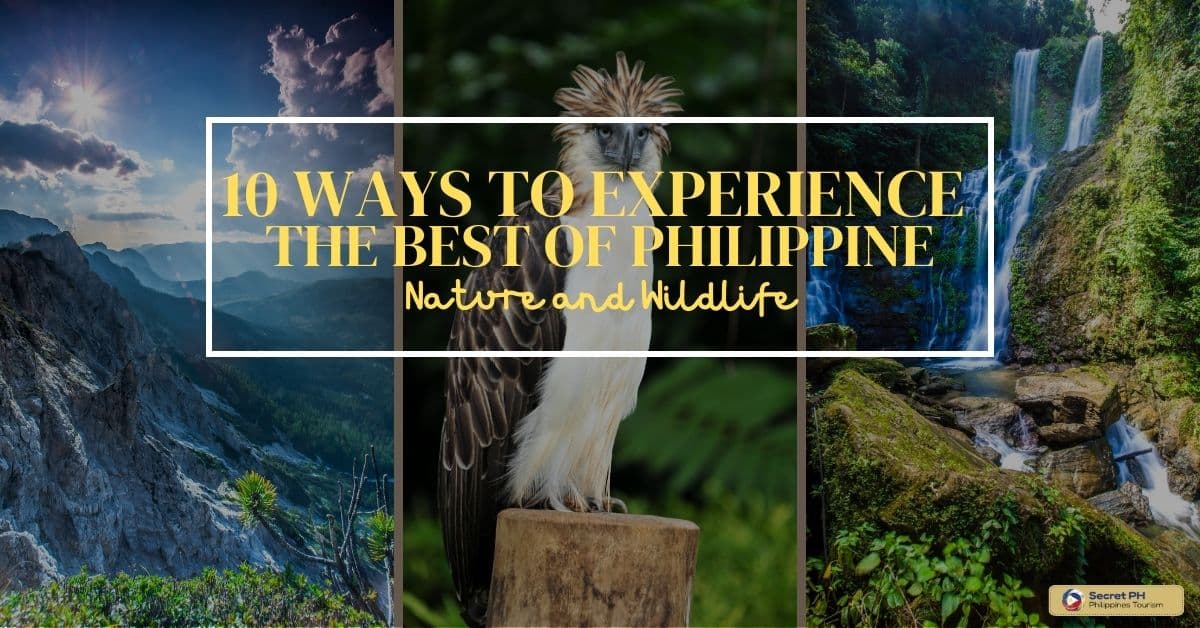
The Beauty and Diversity of Philippine Nature and Wildlife
The beauty and diversity of Philippine nature and wildlife is undeniable. Home to lofty mountain ranges, tropical rainforests, lush coral reefs, and a diverse array of species. Philippine archipelago nation provides an abundance of awe-inspiring natural wonders. The Philippines is known for having the highest level of biodiversity in the world.
With over 100 thousand species recorded thus far, many found only in the country. The collection includes unique and interesting birds such as hornbills and rare mammals like the tamaraw of Mindoro Island. It truly is a land like no other – its magnificent geology, vibrant ecosystems, and abundancy of wildlife.

Dive in Palawan
Dive into an underwater world of vibrant coral reefs featuring a plethora of colorful fish, spectacular sea turtles, giant dugongs, unique invertebrates, mesmerizingly beautiful whale sharks, and even whale sightings can be seen on occasion.
There are dozens of species of important birds that use the rocky cliffs for their nesting sites. Dive in and uncover the secrets that lie underneath the surface to experience why Palawan is hailed as one of the most incredible diving locations in the world.
Recommendations for the best dive spots in Palawan
- El Nido
- Tubbataha Reefs Natural Park
- Coron Bay
- The Wall Roxas
- Bulawit Bay
- Cuttle Fish Shawl
- Barracuda Lake
Information on diving tours and equipment rentals
Diving tours and equipment rentals are widely available in Palawan for those who want to explore the crystal-clear waters and rich marine life of the region. Diving tours can be booked through a variety of tour operators and typically include transportation to and from the dive site, dive equipment, and the services of a certified dive guide.
Some diving tours offer multiple dives in a day, while others offer full day diving excursions. Dive packages can also be customized to suit the needs of the individual diver, such as for experienced divers.
Prepare your diving gears and explore here.

Trek in the Cordillera Mountains
Trekking the majestic, snow-capped peaks of the Cordillera Mountains is a truly incredible experience. The diverse landscape ranges from rainforests to meadows and rock formations, hosting an array of unique flora and fauna. Trekking enthusiasts have the opportunity to spot wild deer and eagles as they traverse along the spine of ridges provided by the Sierra Madre through the mountain range.
Trekkers can also find inspiring botanical wonders among thickly forested valleys. Filled with lush ferns, mosses, orchids and even extraordinary pitcher plants found nowhere else on Earth. Whether one chooses to climb up Mt Pulag or Hashtagg Mountain, or explore hidden areas adorned with exotic blooms like Catmon Tree and Wild Rambutan, trekking in the Cordillera Mountains is an unforgettable experience amongst nature at its rawest beauty.
Recommendations for the best trekking routes in the Cordillera Mountains
- Cambulo – Pula (Batad to Barlig traverse 1/2)
- Barlig – Mt. Amuyao
- Pula – Barlig (Batad to Barlig traverse 2/2)
- From Sagada to Mt Kiltepan
- Mount Ampacao
- Hungduan – Mt. Napulauan (1&2)
- Mt. Langsayan Ridge Traverseorj
- The Sagad Loop
- Walk in Batad
- Mt. Ampacao Traverse
- Blue-Laggon 1- Sagada
Information on guided treks and camping equipment rentals
Guided treks typically include transportation, meals, and camping equipment. Guided treks can be arranged through local tour operators or through the local tourism office.
Camping equipment rentals are also available in Cordillera, these rentals provide trekkers with the necessary equipment to camp in the wilderness such as tent, sleeping bag, and camping stove. Equipment can be rented on a daily or weekly basis, some of the rental shops also offer guided treks.
Get ready for an adventure and click here.

Explore the Rice Terraces
Built by the Ifugao people between 2,000 to 6,000 years ago in the Philippine Cordilleras mountain region, these mesmerizing structures are still intact today and remain remarkable examples of painstaking manual labour. Historians have speculated that the use of sloping terraces was encouraged by regulations limiting land ownership.
The cultural significance of this practice is deeply embedded in its role as a spiritual offering to ancestor deities and its importance during rituals and festivities- making it an integral part of the religious life of not only the Ifugao people but all ethnic groups living in the Philippine Cordilleras region. The unique beauty and historical significance makes this sensational landmark an unforgettable sightseeing opportunity for visitors from across the world.
Recommendations for the best rice terrace viewing spots
| Banaue Rice Terraces | Hanging Bridge |
| Batad Rice Terraces | Banaue Arch |
| Bangaan Rice Terraces | Aguian View Deck |
| Hapao Rice Terraces | Awa View Deck |
| Banaue Viewpoint | Batad Saddle Point |
| Banaue Museum | Tappiya Falls |
| Tam-An Village | Mt. Amuyao |
| Ethnic Village and Pine Forest Resort | Bogyah Hot Spring |
| Hiwang Village | Mt. Napulawan |
Information on guided tours of the rice terraces
Located in Ifugao, Northern part of Luzon island, the ancient rice terraces are 2,000-year-old steps carved into the mountainside. Explore the culture and history behind this UNESCO World Heritage Site with a knowledgeable local guide. Walk on paths that were used for centuries by rice farmers and learn about their living practices from a different perspective.
The terraces form a colorful patchwork across life’s slopes, creating an amazing natural spectacle perfect for photography or just to explore from up close. Sit down in remote villages and see how locals’ lives go on beyond guiding tourists around.
Explore the rice terraces, discover here.

Visit the Apo Reef Natural Park
Located off the coast of Occidental Mindoro in the Philippines, Visit Apo Reef Natural Park. Dive underwater to experience one of the most remarkable coral reef system habitats. The Apo Reef Natural Park is a protected marine sanctuary which is home to an array of diverse species like giant clams, seahorses, manta rays and an impressive variety of over 400 different types of corals.
This area is especially known for its mesmerizing walls feature that is made up of both hard and soft corals. As the glittering waters of this paradise offer amazing views from every angle so don’t forget to bring your snorkeling or diving equipment with you. There’s lively island wildlife, and warm crystal clear waves. Astounding sunsets and unforgettable dives makes Apo Reef Natural Park one of the best.
Recommendations for the best snorkeling and diving spots in the park
- South Corner
- Ego Wall
- Apo 29
- Mabuti Wall
- Hunter’s Rock
- Apo Wrek
Information on park entrance fees and guided tours
Visit the Apo Reef Natural Park in Philippines for a one-of-a-kind nature experience. The park is home to an impressive collection of coral reefs, and is one of the largest atoll reef systems in the world. From snorkeling to scuba diving, there’s no shortage of activities to experience at the Park.
To visit the Park, entrance fees are required, however you can opt to go on a guided tour which will help provide further information on what you may see during your visit.
Visit this park today and explore its rich marine ecosystem, click here.

Spot Wildlife in the Philippine Eagle Center
The Philippine Eagle Center is managed by the Philippine Eagle Foundation and serves as an interactive facility that showcases this magnificent bird species. Located in Malagos, Davao City, the center was founded in 1992 with a mission to conserve the endangered Philippine eagle or ‘haring ibon.’
It features an open-air aviary where eagles are bred and released into the wild, as well as education materials and displays to raise awareness about this majestic bird. Visitors can even learn about the conservation processes being used for continuing efforts in protecting Philippine eagles from extinction.
Recommendations for the best times to visit the center and see the eagles
Spotting wildlife in the Philippine Eagle Center is an unforgettable experience. Timing is essential, and it’s the key to having a successful visit. The best time of year to spot eagles and other wildlife species at the center is during the dry season, lasting from December to May.
During this time of year, fewer chances of rainfall, you can get a clearer view of the eagles and other birds of prey as they soar through the sky during the “Raptors in Flight” show. If possible, try to plan trips up until early afternoon as there are far less crowds compared to later in the day.
Information on center admission fees and guided tours
Spot wildlife and discover the richness of Filipino culture and ecology with a visit to the Philippine Eagle Center! Entrance fees start at ₱300 per adult and children under 15 go free with a paying adult. Guided tours are also available, which feature interactive activities, conversations with experts, and much more.
Whether you’re here to explore the 1000-hectare sanctuary or take a school extra-curricular trip, the educational opportunities abound.
For details and more information, click here.

Discover the Batanes Islands
The Batanes Islands are an archipelago of islands situated in the northernmost tip of the Philippines. Their unique culture has been shaped by the diverse people that inhabit the islands and its combination of Chinese, Spanish and Filipino traditions. The culture is best experienced firsthand with its colorful local festivals where different ethnicities share their customs, ancient practices and beliefs.
Aside from its strong cultural roots, it is also renowned for its stunning natural beauty. There are many trails across the islands offering breathtaking views of rolling hills, turquoise waters, steep cliffs and verdant forests. Here visitors can embrace stunning sunsets and reconnect with nature away from modern technology as electricity runs only a few hours a day on some of the smaller islands.
Recommendations for the best places to visit in the Batanes Islands
| Morong Beach | Rakuh A Payaman |
| Mount Iraya | Chawa View Deck |
| Basco Lighthouse | Food Trip |
| Vayang Rolling Hills | Honesty Coffee Shop |
| Valugan Boulder Beach | Dipnaysupuan Japanese Tunnel |
| Mt. Carmel Chapel or Tukon Church | Diura Fishing Village |
| Sabtang Lighthouse | Chamantad-Tinyan Viewpoint |
| Tayid Lighthouse | Savidug Stone Houses |
| House of Dakay | Ivana Church |
| Naidi Hills | Songsong Ruins |
Information on transportation and accommodations on the islands
Batanes Islands offer several transportation options, both internal and external. For traveling between Batanes’ 11 islands, a number of small ferries are available, allowing visitors to explore their unique beauty. For mainland transportation, Philippine Airlines operates 19-seat ATR planes which shuttle passengers daily between Batan Island and nearby cities.
Air fares can be booked ahead of time online. Accommodations range from basic home stays to luxurious villas; visitors have the choice of booking according to preference and budget.
Discover Batanes Islands, click here.

Explore the Underground River
Exploring the Underground River in Puerto Princesa, Philippines, is a perfect way to discover the wonders of nature. This river is 8.2 kilometers in length and starts in a terminal lagoon on the coast of St. Pauls Bay at Sabang Beach. One of its main features is its underground coral reef system which has made it one of the most unique ecosystems in the world.
The coral reef system provides an abundance of flora and fauna, from various species of colorful fish to sponges and soft corals that are scattered throughout this amazing river system; helping to make it an intricate underwater paradise for visitors to explore and admire.
Recommendations for the best time to visit the Underground River
Exploring the Underground River is an experience like no other. During your journey to the stunning Puerto Princesa Subterranean River National Park, you can bask in the untouched tropical jungle beauty and witness some of nature’s most impressive feats. To get the most out of this mesmerizing experience, planning ahead for when to visit is essential.
November to May are generally the best times to visit as these months have minimal rainfall; allowing you optimal time to explore. The warmest months are from March to May, while its wet season is from June to October. Make the most of your travel trip to the Underground River during the dry season, as the waves are calmer.
Information on park entrance fees and guided tours
Explore the ancient underground river located in the heart of Appalachia, an area known for its diverse and unique environment. Park entrance fees provide access to a range of activities, from sightseeing hikes, guided tours, and educational opportunities for groups of all ages.
Guided tours offer a specialized view into the inner workings of the over 6-mile long underground river, enabling visitors to get hands-on information on identification and conservation efforts within the park.
Explore the Underground River; for more information, click here.

Visit the Tubbataha Reefs Natural Park
The Tubbataha Reefs Natural Park, located in the Sulu Sea in the Philippines, is a breathtaking expanse of vibrant coral reef. Part of a protected marine sanctuary, this stunning reef system covers an area of 96, 828 hectares across two atolls and provides some of the most pristine conditions for tropical wildlife on the planet.
Visitors from around the world flock to Tubbataha Reefs to witness the awe-inspiring variety and diversity of coral life, which includes species rarely found anywhere else. With its lush forests of colorful corals, fascinating array of sea creatures.
Recommendations for the best diving spots in the Tubbataha Reefs
- Amos Rock
- Washing Machine
- Malayan Wreck
- Seafan Alley
- Shark Airport
Information on park entrance fees and guided tours
Visiting the ubbataha Reefs Natural Park is a unique opportunity to view an array of incredible marine wildlife. Located in the central part of the Sulu Sea, visitors can explore the wonders of this national park on their own or join one of our guided tours.
Entrance fees for Tubbataha vary depending on age and tour type; the full-day guided tour fee is estamated P5,000 per person. Younger visitors are eligible for discounted ticket prices, so be sure to check before you visit. Guided tours include visits to its three main reef.
Don’t miss your chance; for more information, click here.

Be Amazed in Bohol
Bohol, Philippines is home to a diverse array of wildlife, including various species of birds, monkeys, and tarsiers. The island is also known for its beautiful beaches and coral reefs, which are home to a wide variety of marine life, including colorful fish, dolphins, and even whale sharks.
The island’s interior is covered in lush, tropical rainforests, which are home to many different types of plants and animals, including the iconic Chocolate Hills, a geological formation of over 1,200 hills that turn brown during the dry season. Overall, Bohol is a nature lover’s paradise, offering a wide range of activities for visitors to enjoy and explore.
Recommendations for the best spots in Bohol
| Chocolate Hills | Historic Churches of Bohol |
| Beaches of Panglao Island | History at the Blood Compact Shrine |
| Hinagdanan Cave | Bamboo Hanging Bridge |
| Loboc River on a Boat or Paddleboard | Man-Made Forest |
| Spend Time with the Tarsiers | Bohol’s Waterfalls |
| Anda Beach | Butterfly Garden |
| Island-Hopping and See Bohol’s Marine Life | Fireflies in Abatan River |
| Bohol’s Adventure Parks | Tagbilaran City |
| Bohol Bee Farm | Cambuhat Oyster Farm |
Information on entrance fees and guided tours
Entrance fees and guided tours in Bohol, Philippines vary depending on the specific attraction or activity. For example, a visit to the Chocolate Hills, a geological formation of over 1,200 hills, typically costs around PHP 50 for adults and PHP 30 for children. A tour of the Tarsier Conservation Area, which is home to the world’s smallest primate, typically costs around PHP 100 for adults and PHP 50 for children.
Guided tours of the island’s many beaches and coral reefs, such as Panglao Island, typically cost around PHP 1,000-2,000, depending on the duration of the tour and the type of activity included. Many tour operators also offer package tours that include multiple activities and attractions, which can be a more cost-effective option for visitors.
Have a deeper dive into Bohol’s wildlife, click here.
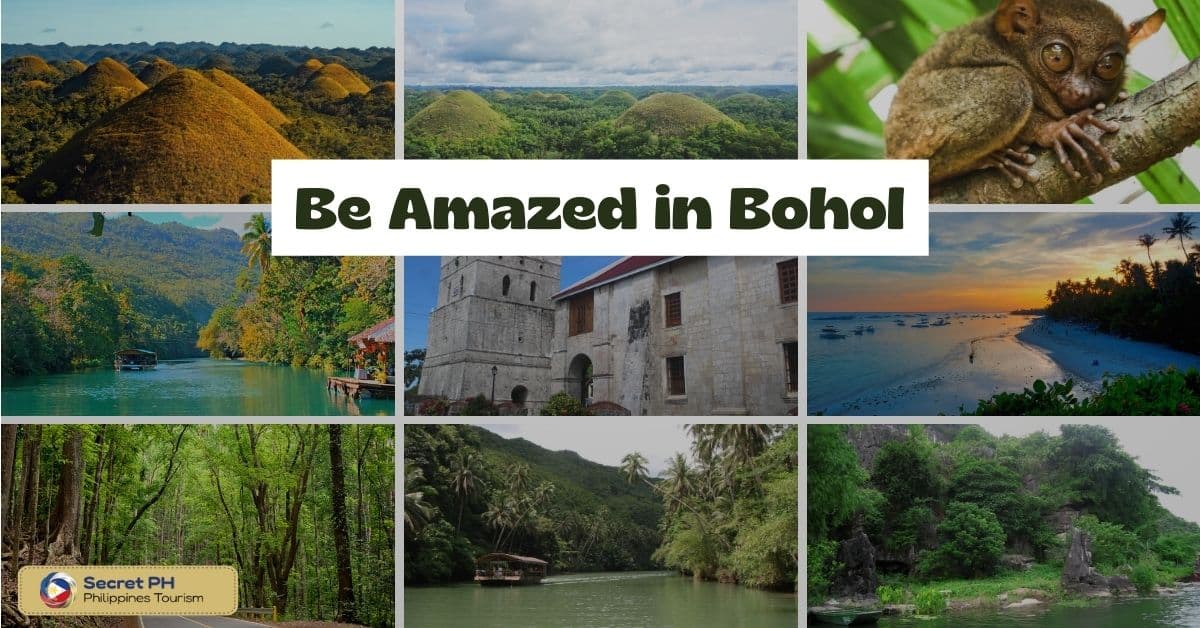
In Conclusion
Exploring the natural wonders of the Philippines can be a truly remarkable experience. From peaceful hillside trails near Manila to pristine secluded white sand beaches on remote islands, there are plenty of opportunities to immerse yourself in the beauty of Philippine nature and wildlife.
The country’s abundant rainforests, diverse coastal areas and spectacular national parks offer countless ways to witness nature’s majesty. With so much natural splendor spread across countless stunning landscapes, there is no better way to appreciate the full majesty of Philippine nature and wildlife than setting out on your own adventure!

